The laser is a powerful light source. It has unusual features and is able to cover long distances with little difference. Based on the unique properties of the laser beam, laser cosmetology has emerged. The direction is distinguished by the ability to penetrate hard-to-reach areas of the body, to control the circulatory process, to choose the most appropriate method of action, to adjust the parameters of the device to the characteristics of the patient's body. The ability to get beautiful skin without cuts and punctures attracts many people. Therefore, plastic surgery and "beauty injections" are preferred for other services that involve rejuvenation and high-energy beam manipulation.
Types of lasers

Different types of cosmetology lasers are used to achieve therapeutic and corrective effects - it is advisable to immediately ask the cosmetologist what installation they use in the office. All types are associated with the absence of results in the form of scars, scars, which often occur after the intervention of cosmetic surgeons.
Availablethese types of lasers:
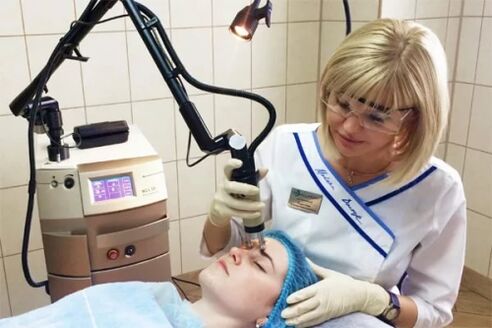
- Erbium. . . Penetrates shallowly, eliminates imperfections with maximum accuracyThe resulting heat energy dissipates quickly so as not to damage nearby tissues. Short, fast pulses must be balanced along with the wavelength and energy density of the propagating wave. Only then are side effects excluded from the procedure. With the help of an erbium laser, striae are qualitatively removed, compression and peeling are performed.
- Carbon dioxide. . . It has been used in cosmetology and medicine for about 40 years. Indications for surface restoration with this special type of beam are wet spots on the face and body, removal of tattoos, low-quality permanent make-up, removal of scars after surgery, attempts to eliminate past injuries, acne.
A carbon dioxide laser (the second name of the unit) is used to perform dermabrasion - a fairly serious cosmetic procedure. If the device does not work properly, if the options are set in a hurry, it will lead to irreversible consequences. The device allows you to direct, adjust and then control the depth of penetration of the dosed high-energy beam. In one session, the cosmetologist processes a large area of skin. Direct indications for the use of carbon dioxide lasers are the need to eliminate the effects of papillomas, colloidal wounds and acne. The patient will be able to normalize the condition of the skin if it was previously problematic. The cosmetologist will remove enlarged pores and smooth the surface of the epithelium. The advantage of the procedure is the low recurrence and side effects, a short recovery period. Disadvantages - redness lasts a long time in the treatment area (up to 2 months). This phenomenon is associated with dilation of capillaries - small blood vessels are subjected to increased stress during the procedure. Allowing the wrong dose of laser beam can cause scarring, weakening or, conversely, increased pigmentation.
- Ruby. . . This beam is used for epilation. Feature - the procedure can be performed only on light skin. By moving on a darkened or naturally dark skin, you can cause pigmentation problems, and a more serious load will cause burns.
- Alexandrite. . . It creates a long-range beam that distinguishes it from its ruby counterpart. Processing requires constant external cooling of the tissues. It is used to expose exposed skin in the absence of sunburn. Hair removal is ineffective and even harmful for a person with blonde hair.
- Diode. . . This type is used for one of the most effective types of laser hair removal. The penetration depth of the beam is not more than 4 mm. The advantage of the procedure is that there is no damage to the body's natural pigmentation.

Also applyneodymium laser. . . The individual characteristics of the resulting energy flow allow it to be used for a variety of purposes - from removing low-quality permanent makeup to epilation. In addition to affecting the hair follicles and the natural pigment of the skin, the radiation affects the small blood vessels. They clot. These types of devices are equipped only in specialized clinics, and their presence in standard beauty salons is very rare.
Indications for laser treatment

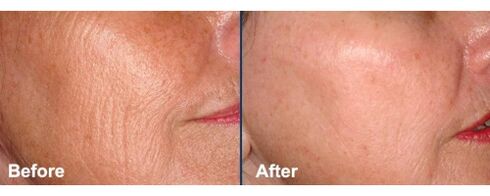
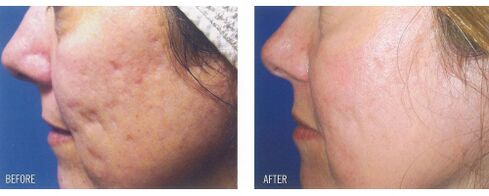
The widespread use of lasers in cosmetology is explained by the multifaceted range of directions. For people with such skin problems, it will be useful to contact a cosmetologist and sign up for the procedure:
- Acne can have serious psychological consequences, such as scarring and bruising.
- Wrinkles are a typical facial expression, associated with age.
- Scars, regardless of their origin, the duration of the restriction.
- Shaking facial contours.
- Looseness of the skin, loss of tone.
- Bags under the eyes.
- Hyperpigmentation on the face and body.
- The presence of dark circles under the eyes.
- Low quality forging.
- Enlarged pores.
After treatment, the skin becomes velvety, smooth, soft and supple. Defects disappear, thanks to which the face and body get an equal texture. The duration of a procedure depends on the type of laser treatment, the patient's expectations, the amount of work to be done and the degree of neglect of the existing defect. Sometimes the duration of a session is determined in advance by the age of the skin problem.
Contraindications to the choice and procedure of a cosmetologist
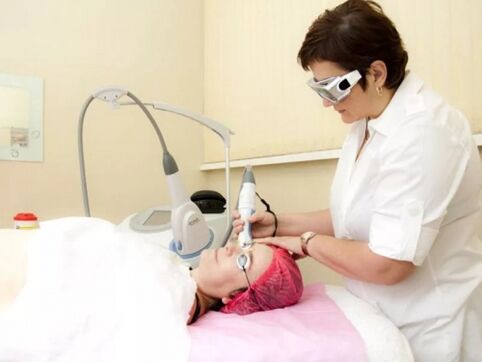
Laser correction has long been used in cosmetology. And since the introduction of the innovation, experts have identified almost all the features of the body, it is better to abandon the procedure in their presence. The limitation is explained by the fact that exposure to high-energy radiation complicates the course of pathological processes that are constantly present in the body.
The list of contraindications is filled every month, because no rejuvenating, corrective effect is not worth a person's life - it is a priority. Choosing the right cosmetologist (salon, not medical center) proves that he wants to gather as much information about your health as possible. A skilled physician will always diagnose absolutely all chronic diseases, as well as take into account that the patient suffered in childhood. Learns about all medications taken regularly or periodically. The main thing is the tendency to allergies, what lifestyle the patient leads, whether he has experience of laser correction, what it leads to.
Absolutely all factors are important, and if a cosmetologist simply registers to visit the procedure carelessly, he can not be called competent.
After identifying at least one contraindication, the doctor will suggest alternative ways to achieve the expected effect or recommend giving up the idea of using a laser altogether.
An authorized doctor will never perform such procedures after learning that the patient has:
- Low blood clotting (family history, including hemophilia), prone to thrombosis.
- Diseases of autoimmune nature - rheumatoid arthritis, systemic lupus erythematosus.
- Inflammatory elements of unknown origin were found on the skin of the face and body.
- Inflammatory processes and extensive skin lesions - psoriasis, dermatosis, herpes infection.
- Pre-cancer condition.
- There are many moles in the body (more than 100).
- Naturally, sunburn (for example, on the beach) causes the formation of new moles. They are slightly darker than existing nevi or indistinguishable from their shadows.
- Oncological tumors of benign, malignant nature (localization does not matter).
- Diabetes, regardless of type.
- Hypertension.
- Chronic renal failure.
- Early postoperative period (weak immunity, can cause an unexpected skin reaction to restore the surface).
- Severe ischemia.
- Flebeurism.
- Psychoemotional instability, the presence of severe mental illness.
- Sulfanilamides, antibiotics, hormonal agents, fluoroquinolones, as well as drugs that increase the effects of ultraviolet radiation should be taken.
- The tendency to activate colloidal scars.
- Vitiligo's family history.
- Pregnancy, lactation.
The presence of these factors is incompatible with the use of lasers, and all these conditions are combined with a common concept - absolute contraindications. If the cosmetologist knows their presence, it should never be possible to achieve the effect with high energy. The procedure can accelerate the course of oncological processes, move to a phase that aggravates chronic diseases and turn moles into malignant neoplasms.
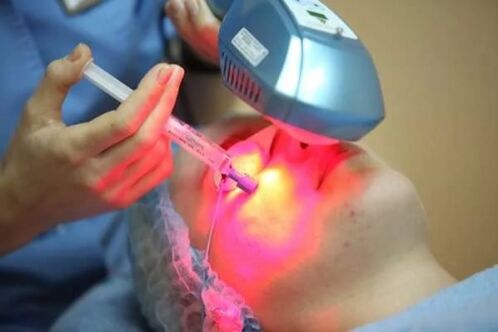
However, there are a few relative contraindications - most of them are temporary, and the cosmetologist only postpones the procedure to another date. These events include:
- Appearance of acne in the affected area, boils.
- Increased body temperature.
- Respiratory tract infections.
- Fresh black.
- Hypertensive crisis on the day of the planned manipulation.
- Menstruation.
- Visit chemical (acid) peels in the last 2 weeks. The skin needs to be renewed, otherwise the exposure will cause burns.
Laser treatment cannot be described as a harmless procedure. The radiation penetrates the skin with the power of energy, destroys old cells, eliminates defective areas. A cosmetologist should be warned if the body has specific features, pathologies and tends to react inappropriately to ultraviolet light.
Side effects of laser exposure
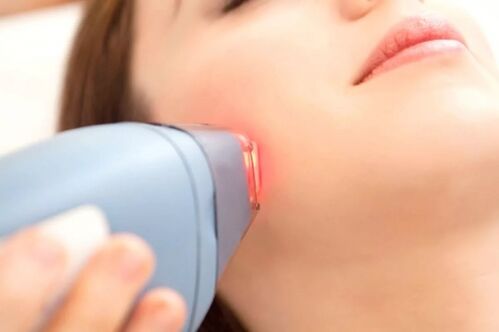
Laser beam is an invention aimed at improving the condition of the image. The procedure is really effective and has already had a clear positive effect on many people. However, even these statistics cannot be insured against possible negative consequences in each subsequent case. For some patients, the exact same treatment can get rid of scars, acne and wrinkles, while for others it can cause problems in the body.
All the negative consequences have their own root cause - they appear due to the illiteracy of the cosmetologist, the characteristics of the patient's immunity, unwillingness to care for the already treated skin surface. Laser radiation can cause the following side effects:
- Burn (when the cosmetologist incorrectly selects the parameters of laser exposure).
- For certain types of laser procedures, crusting is normal. However, the appearance of a crust that causes pain, even in facial expressions, is a pathology.
- Itching due to increased skin sensitivity.
- Redness - usually disappears after 2-3 days, is treated systematically by burning.
- Tissue scarring. Changes in texture are the result of incorrect selection of processing parameters.
- Activation of herpes infection is a reaction of the body's immune system to an irritant.
Side effects also include edema and the development of pus in the treated area. However, this only happens in the case of a bacterial infection - when the patient rubs, the laser polishes the polished surface.
If there are no obstacles to the procedure, laser treatment of the problem area of the skin will be the best option to solve the problem. These are the useful properties of high-precision radiation, which are largely described in the medical literature. Many people who experience psychological discomfort from the perception of external inferiority have found happiness by eliminating aesthetic defects through the use of lasers.





















